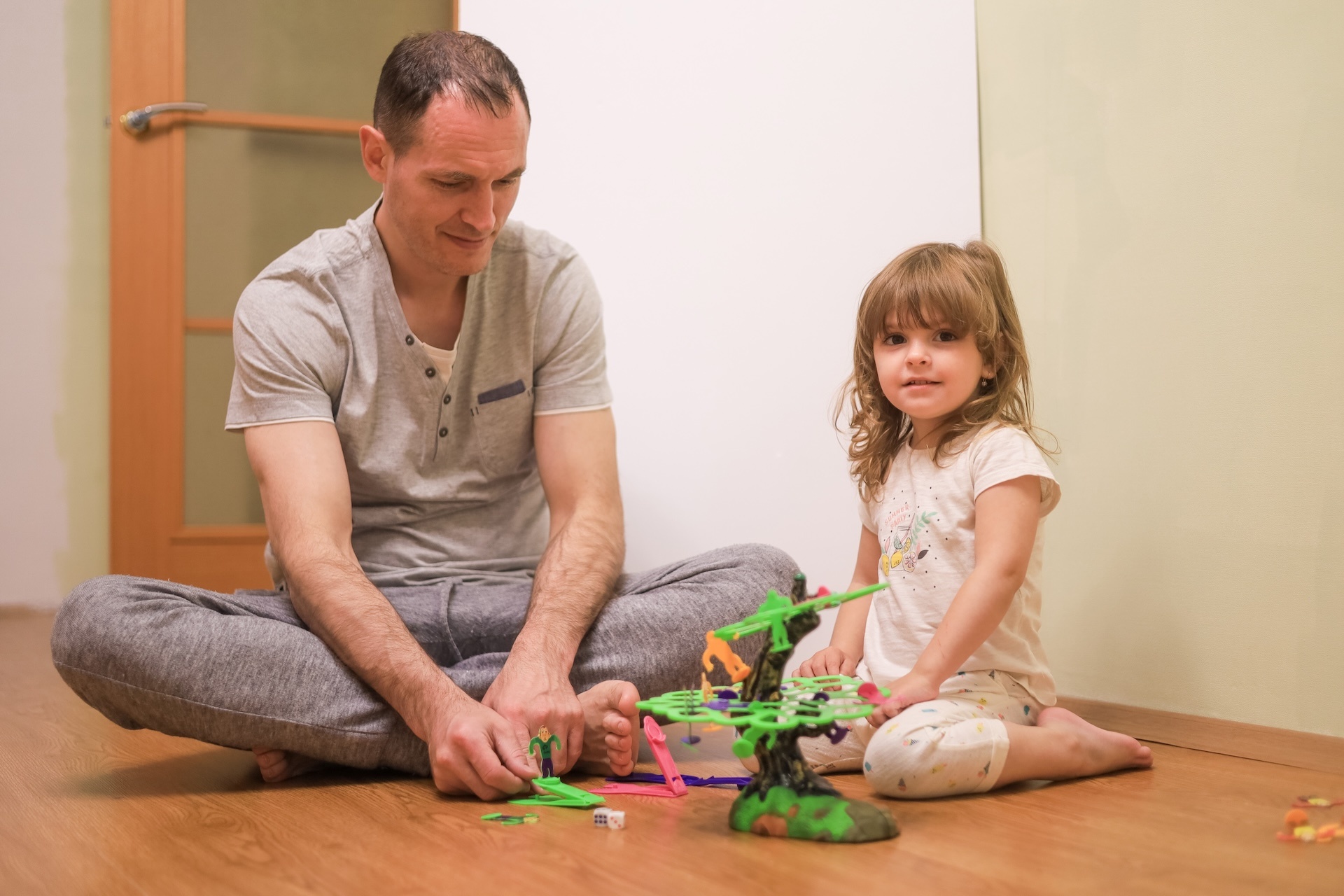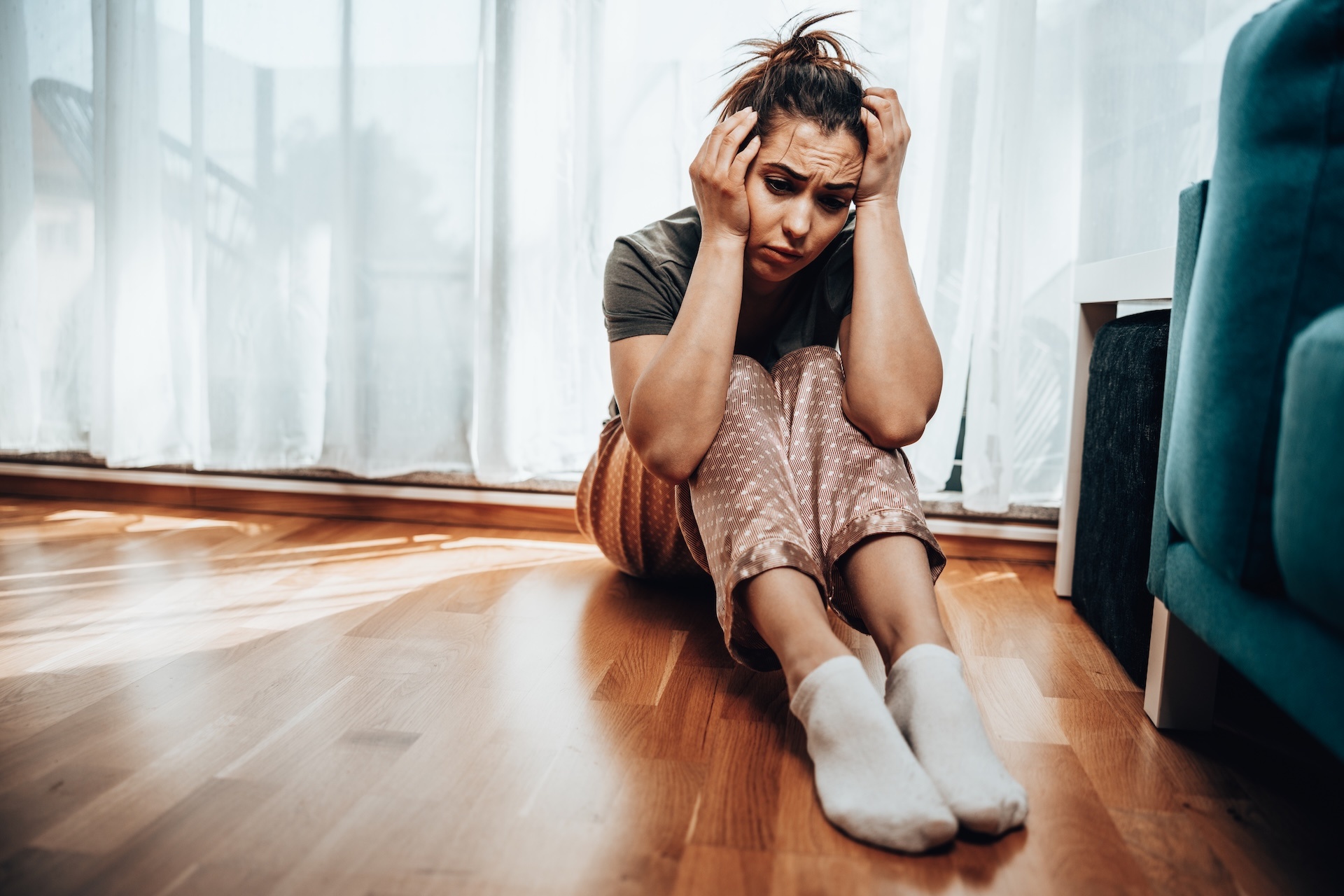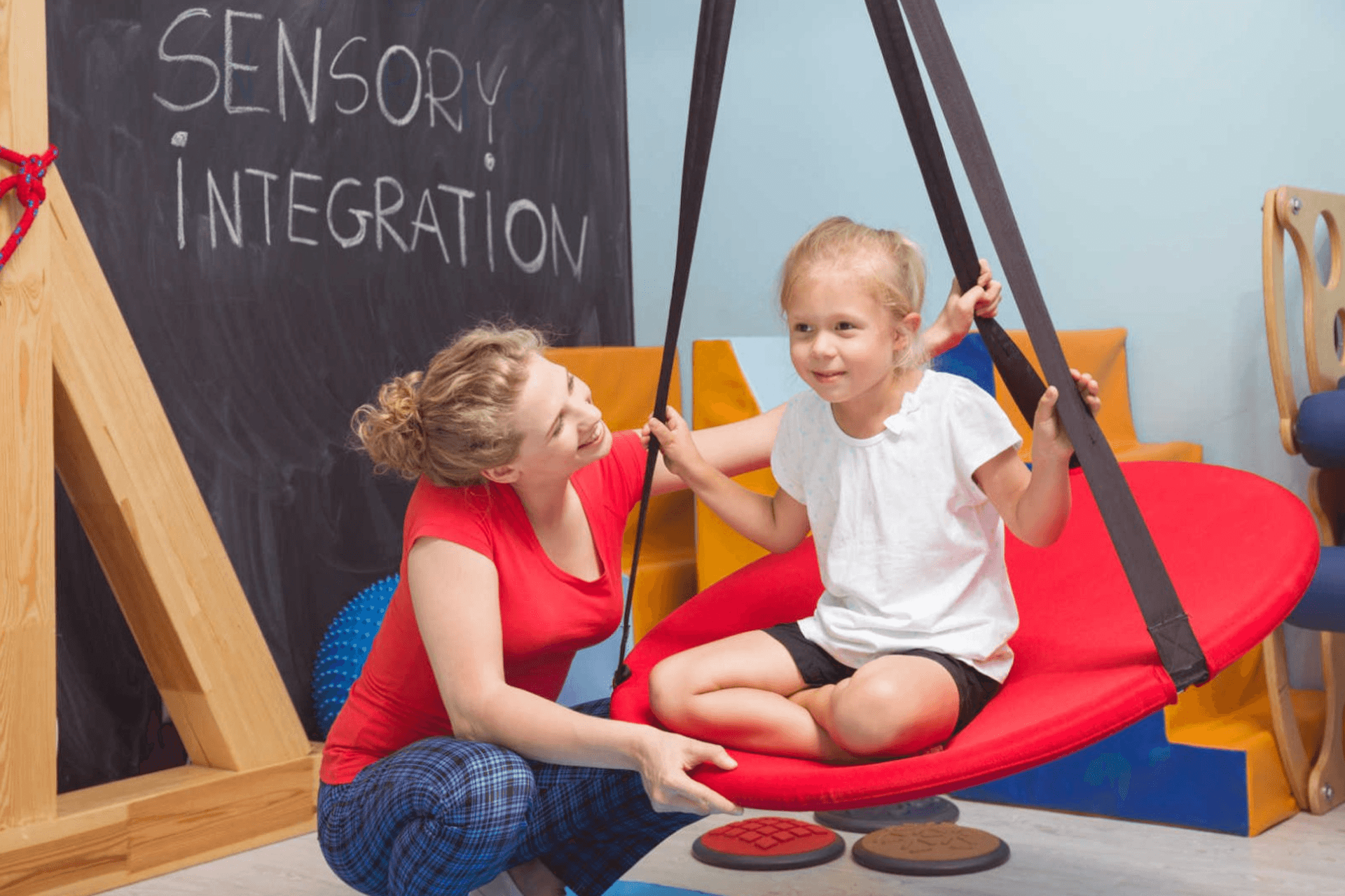Anxiety and Sensory Processing Disorder


Discover how anxiety and sensory processing disorder are connected, and learn practical ways to manage both for a calmer, more balanced daily life.
Living with anxiety and sensory processing disorder can feel overwhelming, especially when both conditions heighten your sensitivity to everyday experiences. Sensory overload might trigger anxious thoughts, while anxiety can make sensory input even harder to manage. If you or someone you love is navigating this complex combination, understanding how these two conditions interact is key to finding relief.
At The Forge Recovery Center, we help individuals facing mental health challenges like these through personalized, compassionate care. In this article, we will explore the connection between anxiety and sensory processing disorder—and how you can take steps toward better balance and recovery.
Understanding Sensory Processing Disorder (SPD)

Sensory Processing Disorder (SPD) is a condition in which the brain has trouble receiving and responding to sensory input. For most people, sounds, lights, textures, or movement are processed without much thought. But for someone with SPD, everyday sensations can feel overwhelming, confusing, or even painful. Their nervous system either overreacts or underreacts to sensory information, leading to distress and difficulty functioning in daily life.
Common Symptoms and Real-World Impact
SPD can look different from person to person. Some individuals are hypersensitive—meaning they might flinch at the sound of a microwave beeping or become overwhelmed by the feeling of a clothing tag. Others are hyposensitive and may not notice pain or temperature changes as easily.
In daily life, this might show up as:
Avoiding crowded places due to loud noises or bright lights
Trouble focusing in school or work environments
Anxiety or meltdowns triggered by overwhelming sensory input
Difficulty with tasks like brushing hair, wearing certain fabrics, or eating specific textures
These responses are not behavioral issues—they’re neurological. Without understanding what’s happening, both the individual and those around them may feel frustrated, isolated, or helpless.
Who Is Affected by SPD?
While SPD is most often identified in children, especially those with autism or ADHD, it also affects many adults—often undiagnosed. Studies suggest that at least 5–16% of school-aged children show symptoms consistent with SPD, but the numbers are likely higher in adults due to underdiagnosis. SPD affects people of all backgrounds, and because it exists on a spectrum, some may function well with minor adaptations, while others may need more structured support.
At The Forge Recovery Center, we recognize how sensory issues can tie into broader mental health challenges like anxiety, depression, or trauma. Understanding SPD is often the first step in creating a calmer, more manageable life.
Understanding Anxiety Disorders

Anxiety disorders are a group of mental health conditions marked by excessive fear, worry, or nervousness that interferes with daily life. While it’s normal to feel anxious from time to time—before a big meeting or during a stressful life event—an anxiety disorder is persistent, often irrational, and difficult to control without support. The fear is disproportionate to the situation and can affect your ability to function at work, in relationships, or in everyday routines.
Common Symptoms of Anxiety
Anxiety symptoms go beyond racing thoughts. They can affect both the mind and body, showing up in ways that are easy to overlook or misinterpret. Common symptoms include:
Constant or uncontrollable worry
Trouble sleeping or staying asleep
Physical symptoms like rapid heartbeat, muscle tension, or stomach issues
Avoidance of certain people, places, or situations
Difficulty concentrating or feeling “on edge” most of the time
These symptoms can be debilitating—causing individuals to avoid social interaction, miss work, or isolate themselves. Over time, untreated anxiety can feed into other mental health challenges, including depression and substance use.
Types of Anxiety Disorders
There are several types of anxiety disorders, each with its own triggers and patterns:
Generalized Anxiety Disorder (GAD): Ongoing, excessive worry about everyday things—health, finances, family—often without a clear reason.
Social Anxiety Disorder: An intense fear of being judged, embarrassed, or rejected in social or performance situations.
Panic Disorder: Sudden and repeated episodes of intense fear (panic attacks) that may include chest pain, shortness of breath, or dizziness.
Phobias: Extreme, irrational fear of specific objects or situations, like flying, heights, or animals.
Separation Anxiety Disorder: Commonly associated with children, but adults can also experience deep fear or distress when separated from loved ones.
At The Forge Recovery Center, we understand that anxiety doesn’t always appear in obvious ways—and it often overlaps with other challenges like sensory sensitivities or trauma. That’s why we tailor every treatment plan to your unique needs, helping you reclaim control and stability.
Are You Struggling with Mental Health or Addiction?
We Can Help. Call Us Now!
CALL: 877-839-1772
The Connection Between SPD and Anxiety
While Sensory Processing Disorder (SPD) and anxiety are distinct conditions, they often overlap in ways that make each one harder to manage. Understanding how they interact is key to breaking the cycle of overwhelm and emotional distress. One of the clearest links? Sensory overload—and its powerful effect on anxiety levels.
How Sensory Overload Fuels Anxiety
Sensory Processing Disorder (SPD) and anxiety don’t just coexist—they often feed off one another in a cycle that can be difficult to break. For someone with SPD, everyday sensory input—like the hum of fluorescent lights, the feel of certain fabrics, or the unpredictability of crowds—can become overwhelming. This sensory overload can trigger intense anxiety, causing the brain to go into fight-or-flight mode even when there’s no real threat.
When your nervous system is constantly flooded with stimuli it can’t regulate, anxiety becomes a natural response. You might dread social settings, avoid certain environments, or live in a state of constant alertness—all in an effort to avoid being overstimulated.
Hypervigilance: A Shared Mechanism
Both SPD and anxiety disorders share a common thread: hypervigilance. This is the state of being overly alert to potential threats, whether external (noises, lights, crowds) or internal (thoughts, emotions, sensations). In SPD, hypervigilance stems from the body’s inability to filter out non-threatening sensory input. In anxiety disorders, it often stems from fear-based thinking or past trauma.
The result is the same: a heightened, exhausting state of awareness. This can make someone feel constantly “on edge,” lead to emotional dysregulation, and cause physical symptoms like headaches, muscle tension, or fatigue. It’s not just uncomfortable—it’s unsustainable.
What the Research Says
Emerging research continues to support a strong correlation between SPD and anxiety. A 2020 study published in the Journal of Anxiety Disorders found that individuals with higher sensory sensitivity were significantly more likely to meet criteria for an anxiety disorder. Other studies have noted that children with SPD are more prone to developing anxiety symptoms as they grow older—especially if the sensory challenges go unsupported.
Clinicians and researchers increasingly recognize that sensory processing challenges can be a root cause of anxiety—not just a symptom. This insight is crucial, because treating anxiety without addressing the sensory piece often leads to incomplete or short-term relief.
At The Forge Recovery Center, we look at the full picture. If you or a loved one is living with both SPD and anxiety, we build personalized treatment plans that address not just your symptoms—but the deeper, interconnected causes behind them.
Strategies for Managing SPD and Anxiety

When you’re dealing with both sensory processing disorder (SPD) and anxiety, there’s no one-size-fits-all solution. The key to relief lies in using a layered approach—one that calms the nervous system, rewires anxious thought patterns, and adapts your environment to reduce overwhelm. At The Forge Recovery Center, we focus on personalized strategies that treat the whole person, not just the symptoms. Here’s how you can start managing both SPD and anxiety more effectively:
Sensory Integration Techniques and Therapies
Occupational therapy is one of the most effective tools for managing SPD. Through sensory integration therapy, individuals are gently exposed to controlled sensory input in a safe, structured way. The goal is to help the brain learn how to process sensory information more accurately over time.
Examples of sensory integration techniques include:
Using weighted blankets or vests to promote calm
Swinging or spinning activities to improve vestibular processing
Deep pressure activities (like squeezing therapy putty) to reduce tactile sensitivity
These techniques help regulate the nervous system and can significantly reduce the likelihood of anxiety being triggered by sensory overload.
Cognitive-Behavioral Strategies for Sensory-Related Anxiety
When anxiety stems from unpredictable sensory experiences, Cognitive Behavioral Therapy (CBT) can help reframe your responses. CBT works by identifying anxious thought patterns and replacing them with more realistic, calming alternatives.
For example, instead of thinking, “I can’t go to that event, it will be too loud and overwhelming,” CBT helps you shift to, “I’ve handled loud spaces before, and I have tools to manage this one too.”
CBT techniques may also include:
Exposure therapy for sensory environments that trigger anxiety
Relaxation and breathing exercises
Journaling to track triggers and patterns
CBT is especially powerful when paired with sensory strategies, as it addresses both the physical and emotional aspects of SPD-related anxiety.
Environmental Modifications to Reduce Sensory Overload
Sometimes the simplest changes can make the biggest difference. Modifying your environment to reduce overwhelming sensory input can help prevent anxiety from escalating.
Try these adjustments:
Use noise-canceling headphones in loud environments
Choose soft, breathable clothing without tags or seams
Dim harsh lighting and opt for natural or soft white bulbs
Keep a “cool down” space with calming sensory items like fidget tools or aromatherapy
By tailoring your surroundings to your sensory needs, you create a safer, more predictable space that reduces daily stressors.
Why Personalized Treatment Plans Matter
No two people experience SPD and anxiety in the same way. That’s why treatment should be as unique as you are. At The Forge Recovery Center, we assess your full mental, emotional, and sensory profile before creating a customized recovery plan. Whether you need occupational therapy, CBT, medication support, or a combination of approaches, we work alongside you to build a plan that fits your life—and evolves with your progress.
Managing SPD and anxiety isn’t about eliminating every trigger—it’s about gaining the tools and support to respond with confidence, calm, and clarity.
Are You Struggling with Mental Health or Addiction?
We Can Help. Call Us Now!
CALL: 877-839-1772
SPD and Anxiety Disrupting Your Life? We Can Help You Reclaim Control
Living with both sensory processing disorder and anxiety can feel like a nonstop battle—but you don’t have to fight it alone. Understanding how these conditions interact is the first step toward meaningful relief. At The Forge Recovery Center, we specialize in treating co-occurring mental health challenges with personalized, compassionate care. Whether you're overwhelmed by sensory overload, constant worry, or both, our team is here to guide you toward balance and recovery. You deserve a calmer, more manageable life—and we're ready to help you take the next step.
Are You Struggling with Mental Health or Addiction?
We Can Help. Call Us Now!
CALL: 877-839-1772





